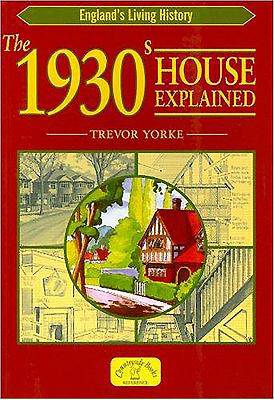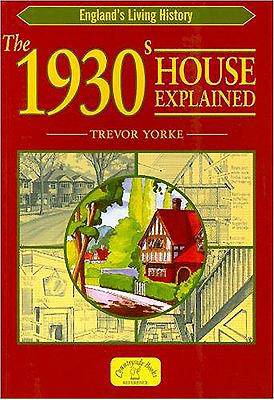
- Retrait gratuit dans votre magasin Club
- 7.000.000 titres dans notre catalogue
- Payer en toute sécurité
- Toujours un magasin près de chez vous
- Retrait gratuit dans votre magasin Club
- 7.000.0000 titres dans notre catalogue
- Payer en toute sécurité
- Toujours un magasin près de chez vous
Description
The English have a love affair with the period house. We find the intoxicating blend of rustication and detailed styling more appealing than the plain and synthetic houses of recent years. The house-building boom of the late 1920s and the 1930s put home ownership within the reach of many for the first time. These were families with modest means but with high aspirations. Modern flat roofed Art Deco villas grew up alongside detached and semidetached mock Tudor styles. Many had both front and rear gardens. Interiors were required to be fashionable and to take advantage of new domestic inventions like the wireless and vacuum cleaner. They were light, clean family homes that were both practical and sexy, blending into a suburban splendor. Metro land had arrived. Using his own drawings, diagrams and photographs, author Trevor Yorke explains in an easy to understand manner, all aspects of the 1930s house, but particularly its style. The book provides a definitive guide for those who are renovating, tracing the history of their own house, or simply interested in this notable and ever popular period. As with other titles in this series, The 1930s House Explained is profusely illustrated with drawings of the period details which can help date them and there is a glossary of the more unfamiliar architectural terms. Trevor Yorke lives on the edge of the Peak District and is a full-time artist and designer. His books include Tracing the History of Villages, The Country House Explained, The Victorian House Explained and The Edwardian House Explained.
Spécifications
Parties prenantes
- Auteur(s) :
- Editeur:
Contenu
- Nombre de pages :
- 128
- Langue:
- Anglais
- Collection :
Caractéristiques
- EAN:
- 9781846740022
- Date de parution :
- 01-12-06
- Format:
- Livre broché
- Format numérique:
- Trade paperback (VS)
- Dimensions :
- 152 mm x 210 mm
- Poids :
- 272 g

Les avis
Nous publions uniquement les avis qui respectent les conditions requises. Consultez nos conditions pour les avis.






